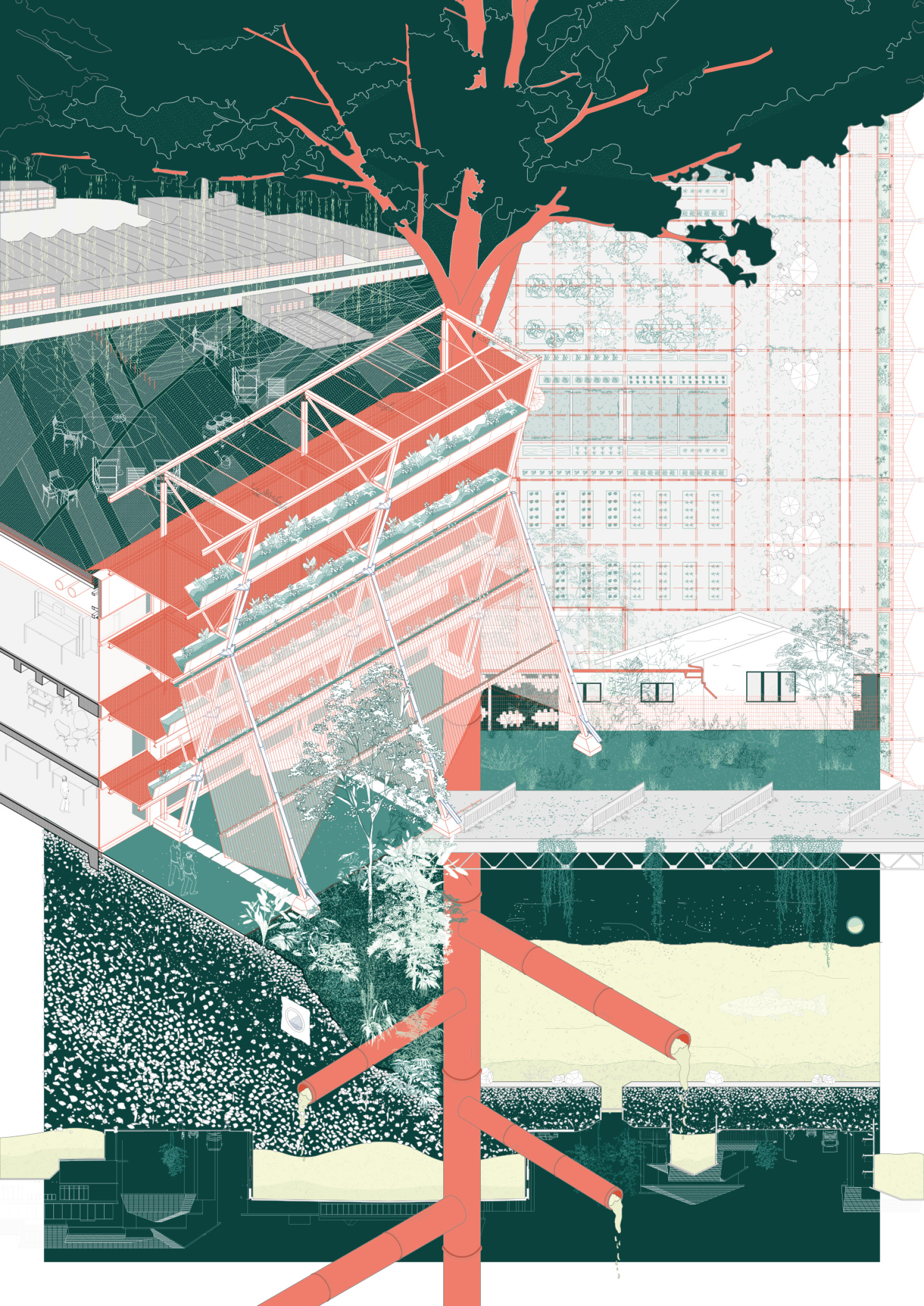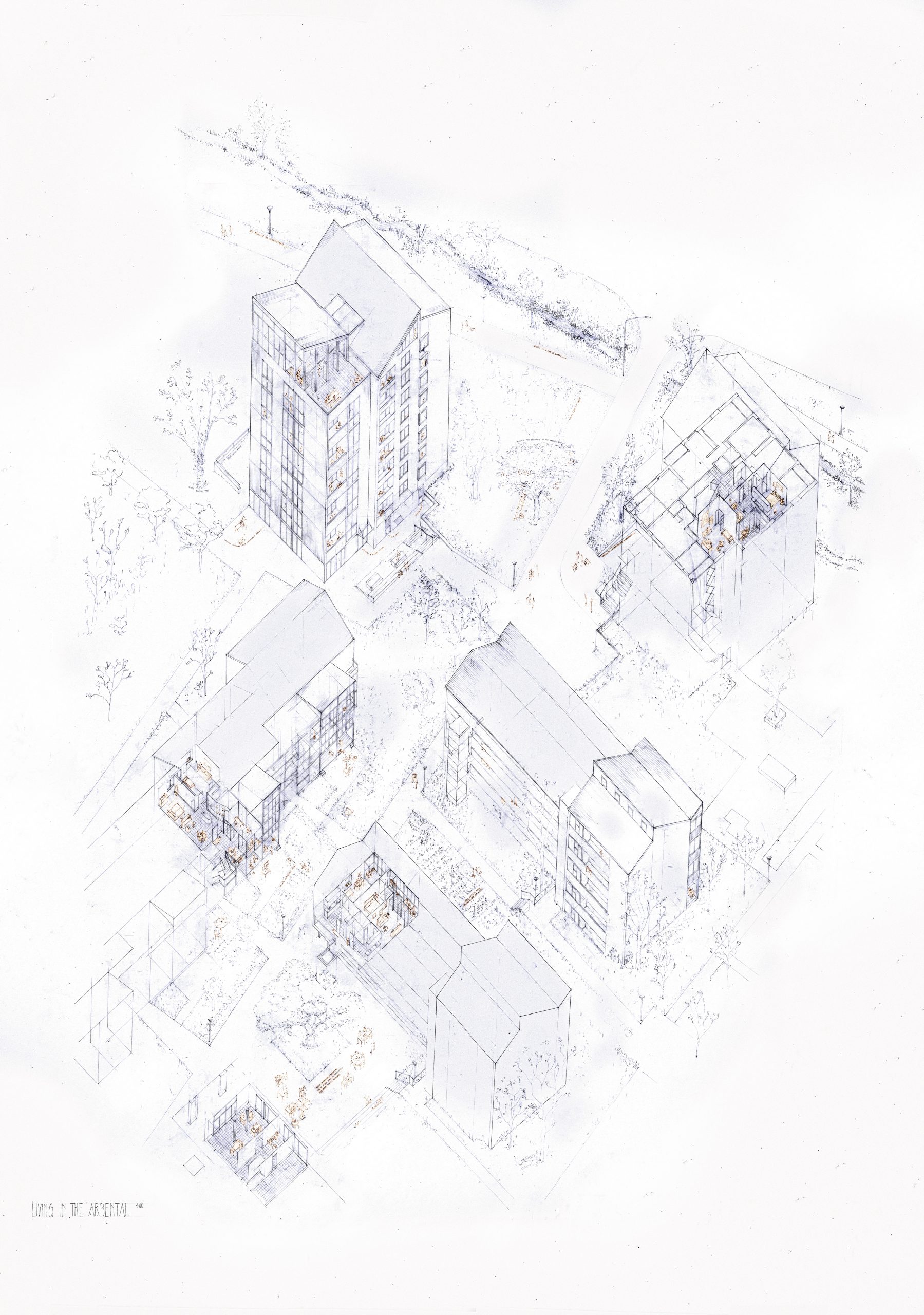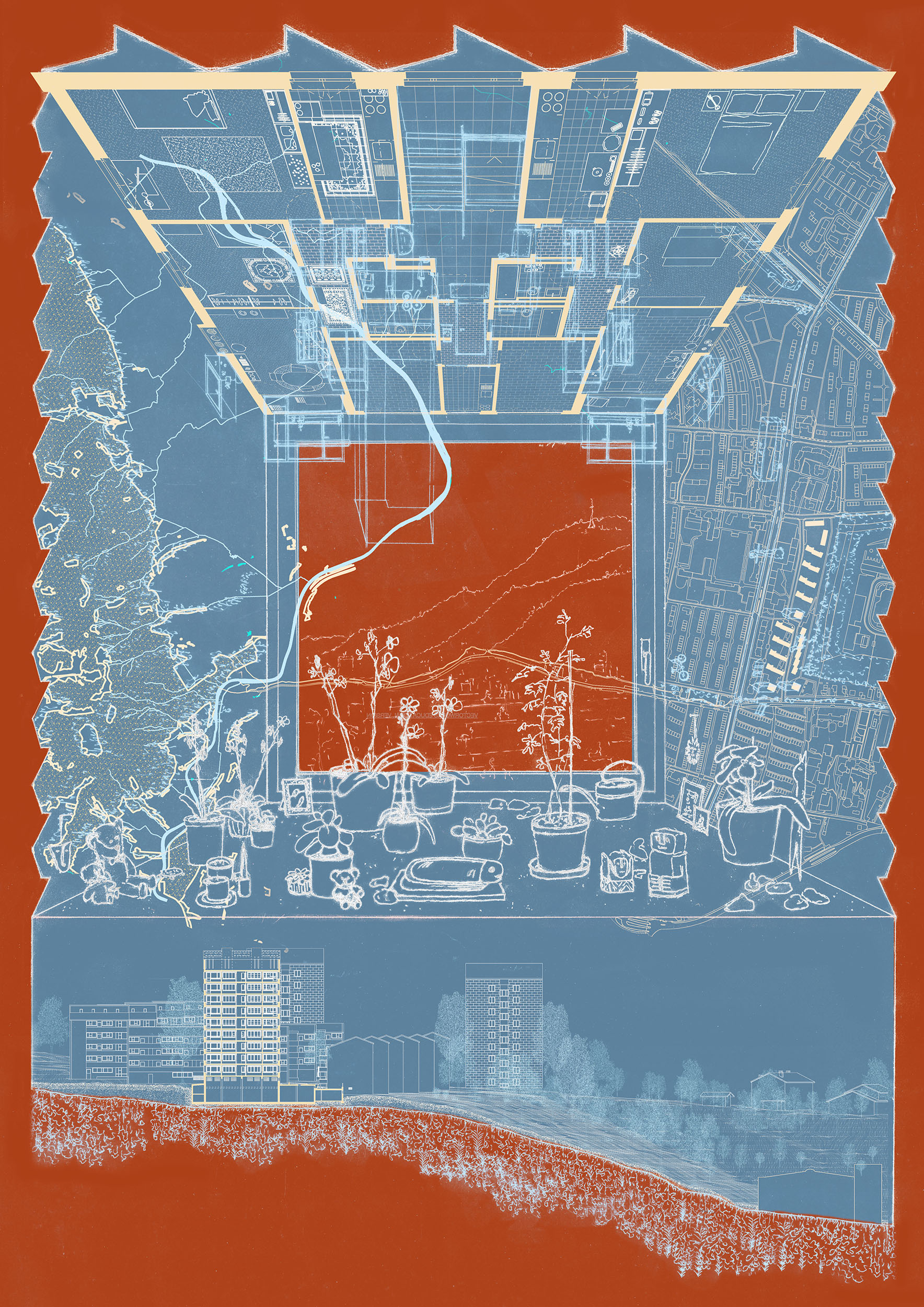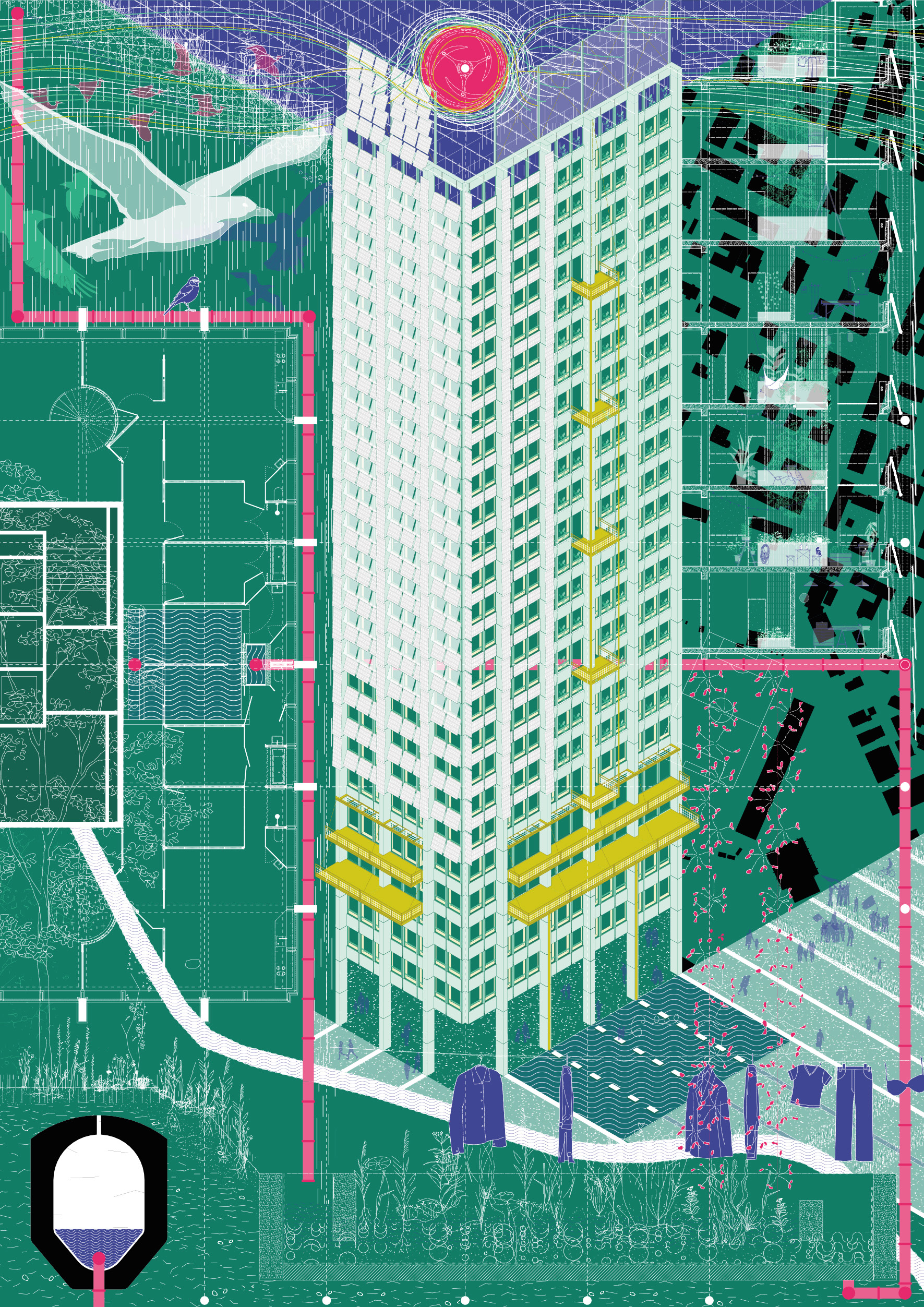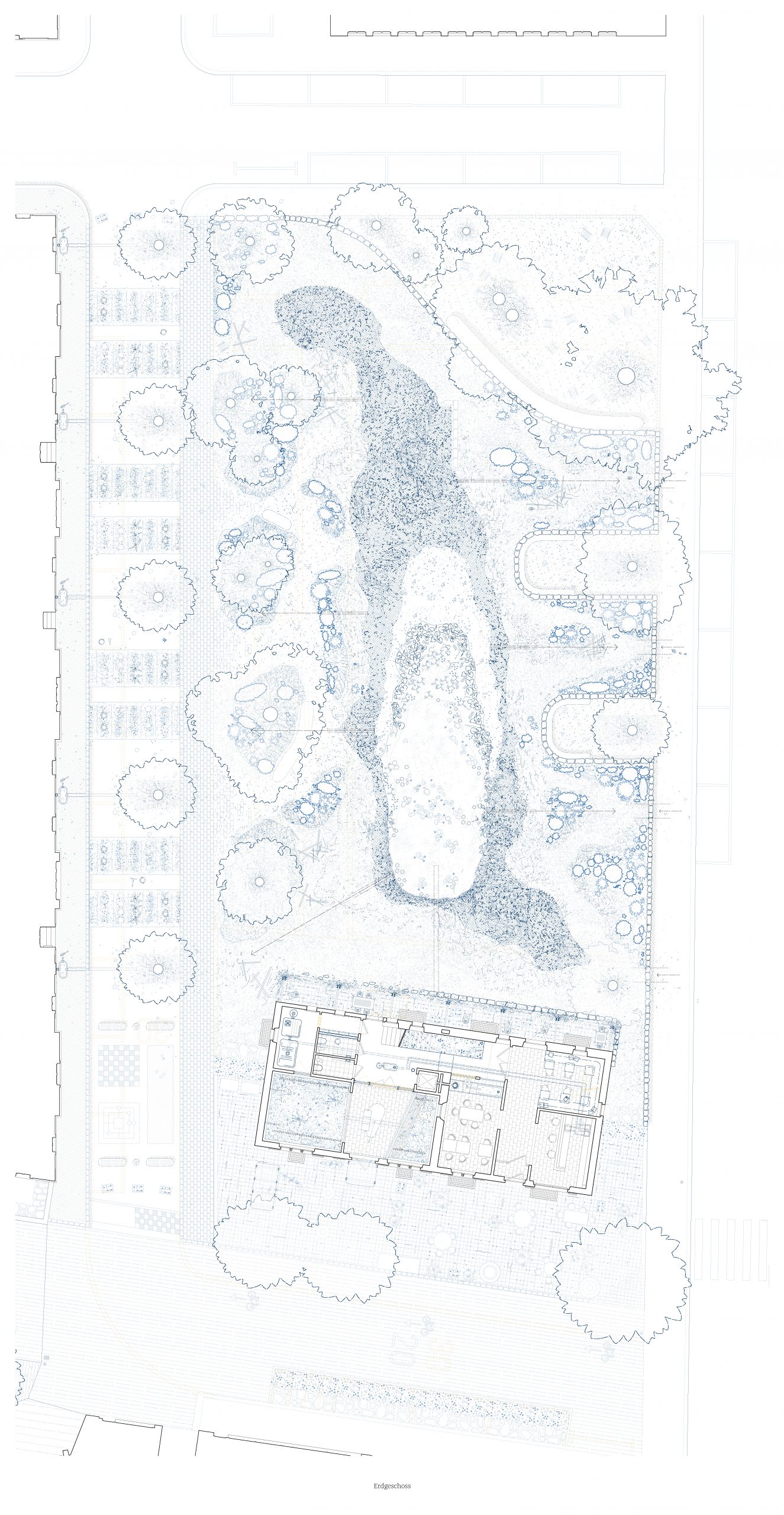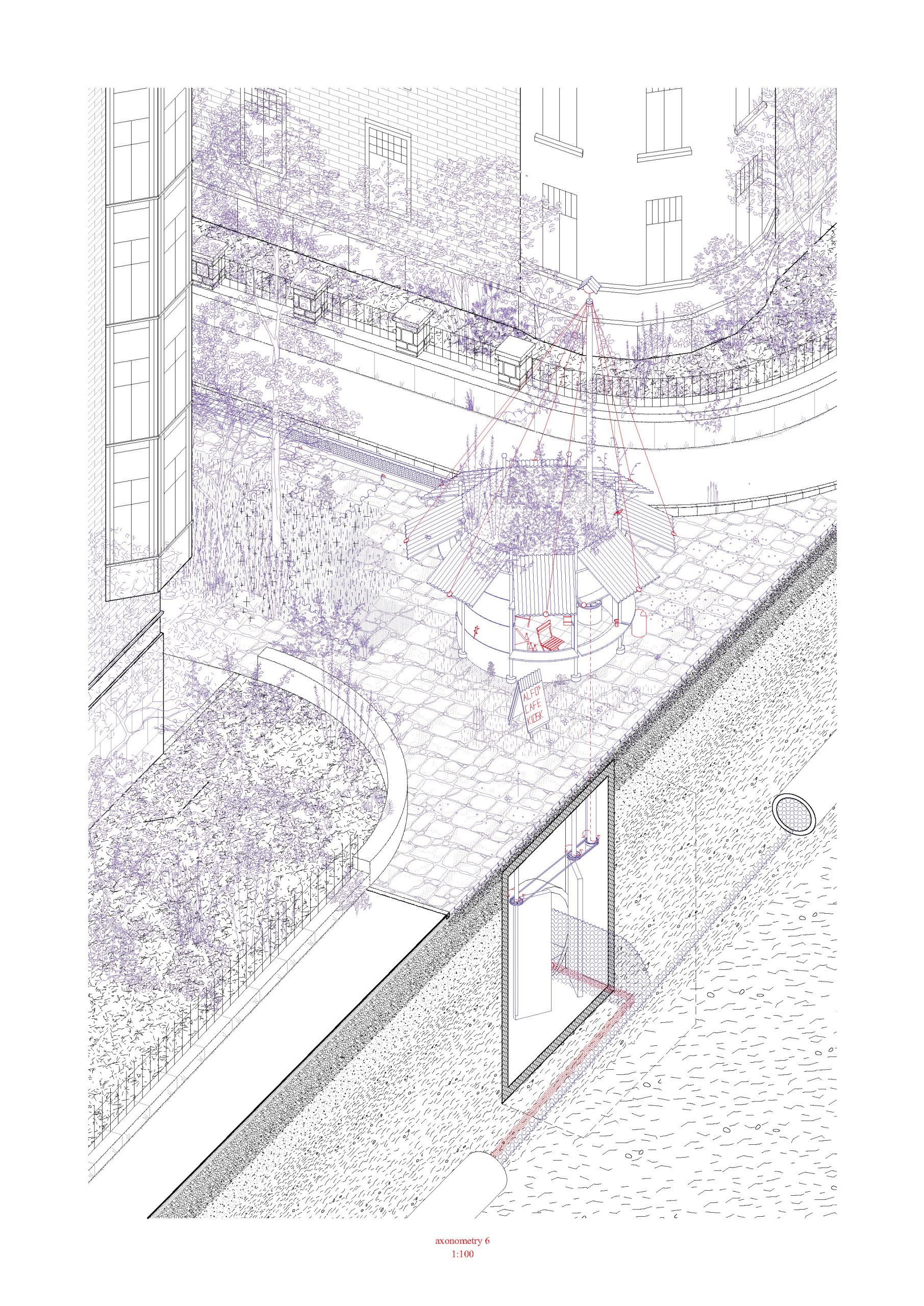Luigiemanuele Amabile in conversation with Maria Conen.
LA: To begin: could you describe how you typically organize your design studio? Are there particular characteristics of your approach that you consider specific to the ETH context – or to your own architectural vision – when compared to other institutions?
MC: I can say that the teaching is not really influenced by the place where we teach. It’s really something that comes from a deep interest we have in architecture – and also in the whole environment we live in. That’s how we approach teaching: it’s always about thinking in a very holistic way about the project. So it’s not only about the object – it’s really about everything around it too. I’d say that’s not linked to the university; it’s also something we do in the office. The work we do in the office is, in that sense, very much linked to the vision – or perhaps the attitude – that we try to teach. Maybe it’s an attitude of understanding the site before starting the project. So, in that sense, I can just talk about the teaching – and I’d say that, in recent years, it always revolves around both existing structures and contexts. By contexts I mean: the soil, the plants, the trees, the animals and the inhabitants – everything that is already on site – and all of it is as important as the built structure. So we always look at things through multiple layers, not just the layer of the constructed world that we usually look at in architecture. I’d say something very important in our teaching is this layering of elements, which we try to analyze at the beginning of the project. It’s what we call “Ways of Looking”.
LA: I found it really interesting that you used the word “attitude” or “behavior”, in the Italian academic context – and this reflects my own education – architectural pedagogy has long been shaped by traditions emphasizing form-making, typology, the role of the city and the authority of architectural knowledge. In contrast, your description seems to point toward a more interpretive, responsive mode of engagement. So I’d like to ask: do you think the architect’s knowledge of form – the ability to shape and manipulate form – is still central today? Or should we begin to question and perhaps decenter that kind of authorship in favor of other priorities?
MC: I think space remains fundamental – creating and shaping space is how we live. It’s about protection, feeling at home and creating atmosphere. I was also very influenced by Aldo Rossi and that strong way of looking at form and his belief that form could solve everything. I still think form is important – but form should really react to what’s already there on site. An overly formalistic approach often overlooks what already exists. It assumes that you arrive somewhere and impose your vision. I think we can’t and shouldn’t work that way anymore, because so much is already here. We need to continue these stories. Often there’s already quality in those spaces – sometimes hidden. That’s why it’s essential to understand the context. Maybe the generation before mine would say, “concept before context”. But for me, it’s the opposite. Especially with the ecological questions, the biodiversity crisis, species loss… we can’t just arrive, do something, and leave again. That’s too easy… And this complexity we face today – we can’t solve it with purely formal tools. Form is important and it can be the most beautiful part of the design process – but it arrives after the reading of the context. The buildings we design are often meant to stay for a very long time – therefore it’s important to be thoughtful about the design and construction. But I wouldn’t separate so strictly anymore between inside and outside. I’m very interested – as I said – in the exterior being as important as the interior. And by exterior, I don’t just mean the line that separates inside and outside – the façade – I mean the outdoor spaces and their relationship to the building. When you start thinking this way, you also have to ask: how important is the building itself? Because you build not only into the earth but into the world’s fabric – its materials, ecologies, and human networks – and in the end, the building is only a small part of that. So where do you put the focus? What are the most important things to take into account? If you only think from a formal point of view, you are centering everything around the human being standing in front of the building. But in today’s globalized world, we can’t think like that anymore. There are too many other layers involved. Materials come from somewhere; they carry footprints, they affect not just your site but the entire ecosystem. That’s the fundamental difference, I’d say, from a purely object-based way of thinking about architecture.
LA: From what you describe, it seems that you encourage students to engage with complexity – to work across multiple layers of observation and analysis. Could you explain how you introduce this in the early phases of the studio? Do you have specific methods or pedagogical tools to help students develop a critical understanding of context – beyond the purely physical?
MC: Yes – the idea of “ways of looking” is always present in the first phase of the project. We always start by asking, how should we look at the site to understand its different layers? We work a lot with photography – because I think it’s a great way to capture an existing context. It allows for personal interpretation. Each photograph can express your own way of seeing– not just a quick snapshot, but a deliberate act: how do you frame something? How close do you go? How bright or dark is the picture? What do you include or exclude in your frame? We often ask students to take two photographs of the site – one that speaks to the architecture and one that relates to the broader context. These two become the starting point for discussion. This is complemented by material from archives, interviews with local people, and also with three main lenses: the sociological (who’s there, how they live), the ecological (what plants, animals, species are present), and the political-economic dimension (what forces shape the site and its uses). That’s how we start the project. Then – depending on the semester – we add a fourth layer: references from architecture. For instance, in the last two semesters, we worked on the theme of “In and Out.” It focused on the section and the threshold between interior and exterior – what does the façade do? How open or closed is it? What happens at ground level, where the building meets the earth? The students had to draw a section from an existing housing project. That became the first way of entering the topic. Interestingly, many of them brought questions from that section analysis into their own projects – even if they were working with a different site. That’s how we do the analysis, and it plays a fundamental role in the studio. Then you begin to talk about space, about form, and so on – but these grow naturally from everything that came before.
LA: The way you approach “context” is particularly rich – not as a static backdrop but as something layered and active. In fact, we could say that we no longer speak of a single “context”, but of many. Each project might engage environmental, social, political, and historical dimensions, all perceived differently by those who inhabit them. In this light, I’d like to ask about the relationship between your academic teaching and professional practice. You are a partner in a well-known office in Zurich. Do you structure your design studios similarly to how you work in the office? Or do you apply what you learn in the academic context to your practice? Is there a reciprocal influence between these two domains?
MC: Yes, my partner, Raoul Sigl, and I used to teach together, and teaching and practice are very linked. In the office, projects last five to ten years; at school, only 14 weeks. So the depth and rhythm are completely different. In the office, we often hit limits – regulations, clients, costs – that can restrict experimentation and innovation. At the university, we have more freedom and access to researchers from many fields – engineers, ecologists, urban theorists and sociologists. We collaborate, learn, and explore perspectives we couldn’t in practice. In return, these discoveries feed back into the practice…
LA: Your mention of clients and competitions makes me think of the difficult realities many young architects face after graduation. In your view, how can emerging students-practitioners develop the critical awareness to choose which projects or clients to accept – especially at the beginning of their careers, when opportunities may be limited? What strategies or forms of ethical positioning would you recommend to young architects trying to remain true to their values?
MC: In Switzerland, we have a very open competition system – young offices can enter competitions and shape their own path. But it’s still not an easy path to follow. In that sense, teaching critical thinking is an important part of my work at ETH: be proactive, but stay critical. Question things. Choose consciously where you work and with whom you collaborate.
LA: In Italy, architectural education still places a strong emphasis on the disciplinary identity of architecture as a civic art – and on its compositional dimension. We don’t typically speak of “architectural design” as in Anglo-American contexts, but rather of architectural composition. This reflects a certain cultural continuity and an idea of architecture that is at once artistic, formal, and civic. What is your view on the relevance of “composition” today? Does the idea of architectural composition still have meaning in a context where reuse, transformation, and adaptation often replace invention?
MC: I still talk a lot about composition and proportion. When it comes to reusing elements, such as windows, doors, and fragments from other buildings, it’s all about how things fit together. However, this is not about starting from scratch, as in the Beaux-Arts tradition. It’s about creating something new with what’s already there – often in a less formal way and guided by the existing context. Reuse also demands a deep understanding of the elements of architecture: what is a column? What does it mean spatially to place a pillar? How does it relate to a beam? These questions remain central – just approached differently. Ultimately, construction is always about combining materials in meaningful ways, and this still matters. In our office and studio, we constantly discuss composition in terms of space, urban relationships and materials. At the same time, we are rethinking elements of architecture. Is a staircase still a meaningful architectural feature? Or has it become an exclusive feature, inaccessible to many? We need alternatives. Take the step as a threshold, for example – once a symbol of transition, it now poses accessibility issues. We are rethinking how buildings interface with the public realm. Some elements evolve, while others – such as the column – remain unchanged. I still admire Palladio’s villas. In Villa Cornaro, for example, four columns do not touch the wall yet still define the entire room. No furniture is needed – the columns create the space. These references still have much to teach us. The key is to avoid copying them blindly. Learn from them and reinterpret them. That’s what I believe.
LA: You mentioned earlier the increasing importance of working with reused materials and existing elements. Do you see this as a return to questions of proportion, jointing, tectonics – in short, composition – but approached through different means? And if so, how does that influence the way you frame the studio projects?
MC: No, it shouldn’t be fixed. We usually work in existing structures, so something is already there – and that’s very different from starting with a blank page. We’ve done new-build projects in studio as well, but when, for example, we work on housing, you already think about what it means to live in an apartment – and what it means to live in its surrounding context. You work at both levels. I can’t say we move from large scale to small scale – it’s more of a mix. The layering I mentioned earlier helps students work at different scales at the same time: developing spatial ideas while also dealing with broader themes. That process eventually forms a vision. I have also seen other studios start from one-to-one elements and build outward – that works too. Personally, I tend to begin from stories we find on site and carry those into the architecture. That story might start with a detail – a one-to-one element – or with something else entirely: a calculation, a material, an encounter. I don’t follow one doctrine.
LA: Maybe just a last quick question. It seems that you give a lot of space for students to bring in their own references, to build their own layers of knowledge and reach their own final design. How important is this freedom? How do you think it relates to the collective structure of the design studio? In other words: how do students bring their personal trajectory into a shared space?
MC: That’s a good and complicated question. I would say – and I want to be precise here – being a good teacher means having a real conversation with your students. You guide them, but you also let them follow your line of thought. It’s not about saying “this is right” or “this is wrong”. It’s about dialogue – explaining your position, repeating that discussion. In that sense, it’s not completely free. Not everything is possible. Even in the references we choose – for example, the photographers we ask students to study – we set a very specific framework. We say: take photographs in the spirit of this particular photographer, because we believe it’s a productive way to learn how to frame and observe. It’s a big internal discussion before every semester to select the references. The same goes for choosing the site; that already reflects a specific attitude we want to transmit. We also give lectures, short workshops, and invite guests. In the end, we’re building a kind of environment – a space – and within that space, students can move, swim, navigate, find their own position. And then, through weekly discussions, we draw together, reflect together. That’s how students develop their projects and their own way of thinking. They start to understand the reasons behind their decisions. It’s a shared process involving the whole teaching team. We spend a lot of time thinking about the students’ projects. I think that’s part of the responsibility of a good teaching team: to take time and support students throughout their journey. They should understand the reasons behind what they are doing. Of course, some students find their own path more quickly, and you just guide them a little. Every student is different – in their abilities, their timing, their process – and you have to work with that. It’s a way of communicating and building trust. In the end, students should be able to stand by their project and explain it clearly – that’s when you really learn critical thinking, which is another key idea we emphasize in the studio. It’s about finding your own voice. There’s a wonderful book by bell hooks called Teaching Critical Thinking – it’s one of my favourites. It covers everything: how to teach, how to respond, how to resist. I found it deeply impressive.
LA: Throughout our conversation, what struck me is how often metaphors of voice and conversation emerged – dialogue among students, within your team, with the site, and with architectural history. It seems that dialogue itself is central to your approach, both in education and in practice.
MC: Exactly, yes – that’s very true.
______________________________________________________________________________________________
Luigiemanuele Amabile – Architect and PhD, research fellow of the project DT2 (UdR Università degli Studi di Napoli “Federico II”).
Maria Conen – Professor for Architecture & Housing, ETH Zürich; Conen Sigl Architects / Zurich.

